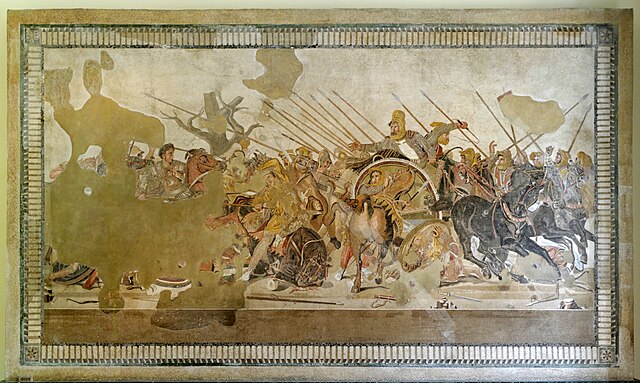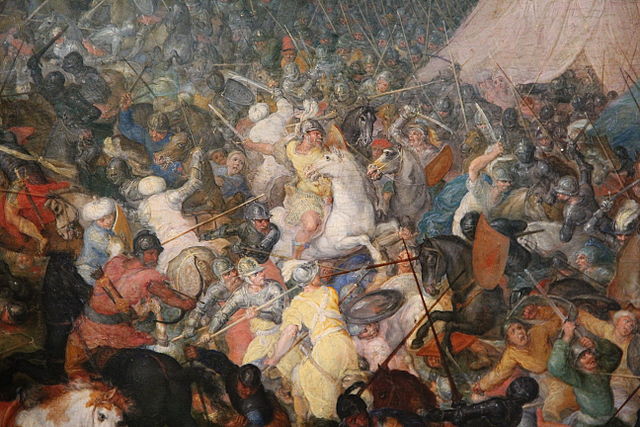The Battle of Issus occurred in southern Anatolia, on 5 November 333 BC between the Hellenic League led by Alexander the Great and the Achaemenid Empire, led by Darius III. It was the second great battle of Alexander's conquest of Asia, and the first encounter between Darius III and Alexander the Great. The battle resulted in the Macedonian troops defeating the Persian forces.
Alexander battling Darius at the Battle of Issus (Naples National Archaeological Museum)
The Battle of Issus by Jan Brueghel the Elder in the Louvre
The battlefield at Issus
Sabakes, the Achaemenid satrap of Egypt, died at the Battle of Issus defending Darius III.
Alexander III of Macedon, most commonly known as Alexander the Great, was a king of the ancient Greek kingdom of Macedon. He succeeded his father Philip II to the throne in 336 BC at the age of 20 and spent most of his ruling years conducting a lengthy military campaign throughout Western Asia, Central Asia, parts of South Asia, and Egypt. By the age of 30, he had created one of the largest empires in history, stretching from Greece to northwestern India. He was undefeated in battle and is widely considered to be one of history's greatest and most successful military commanders.
Alexander in the Alexander Mosaic
Archaeological site of Pella, Greece, Alexander's birthplace
Roman medallion depicting Olympias, Alexander's mother
Philip II of Macedon, Alexander's father








